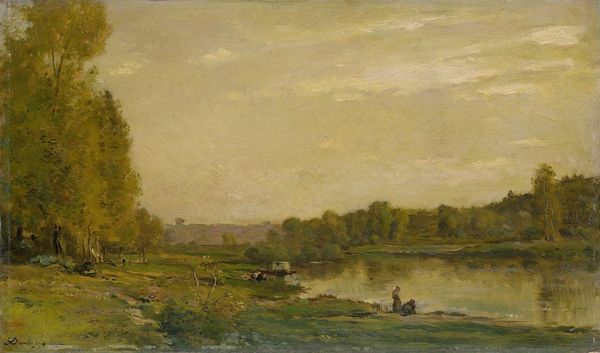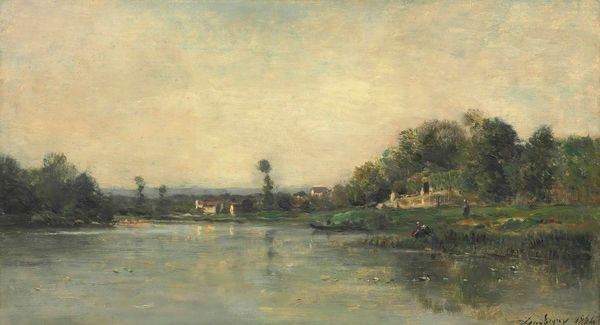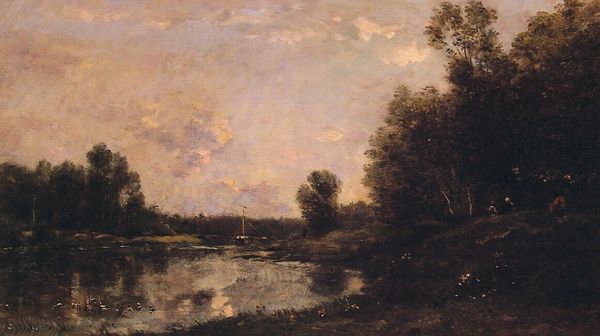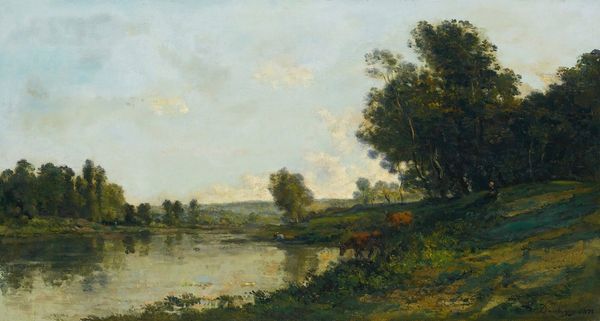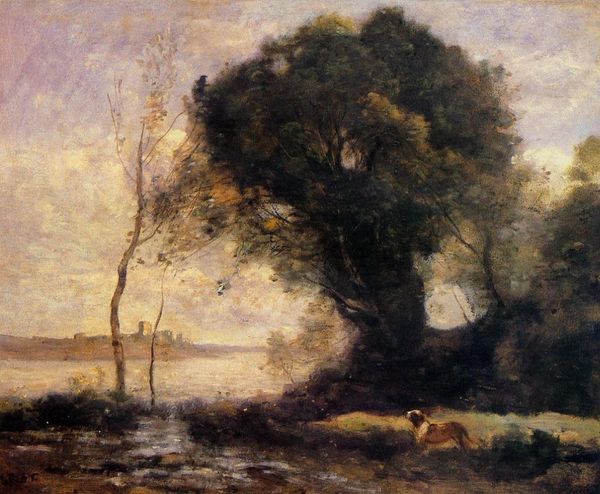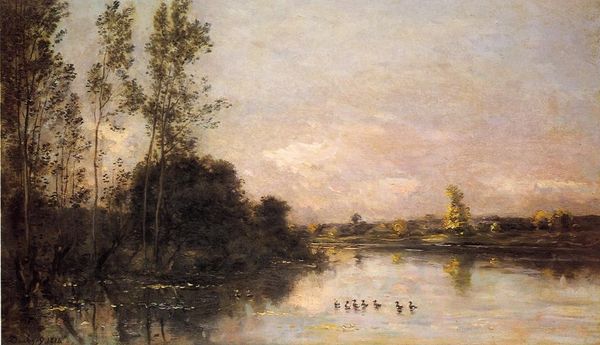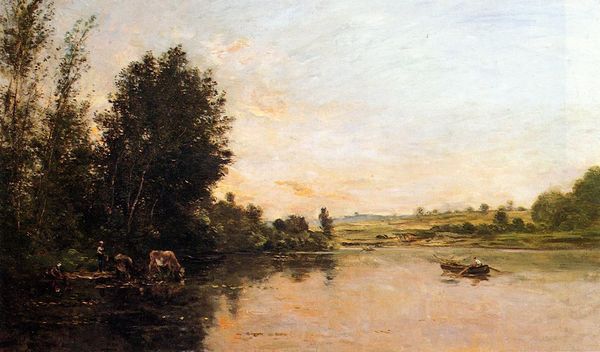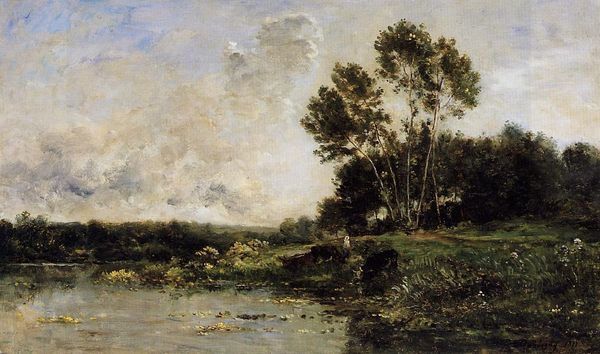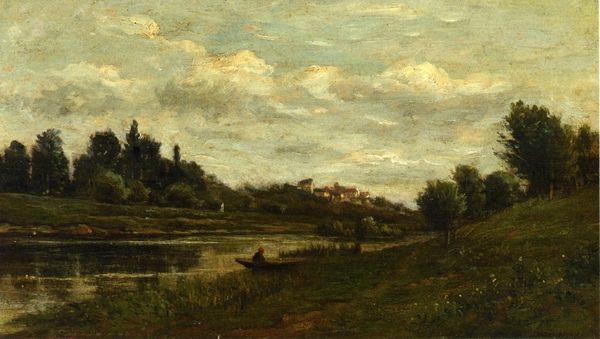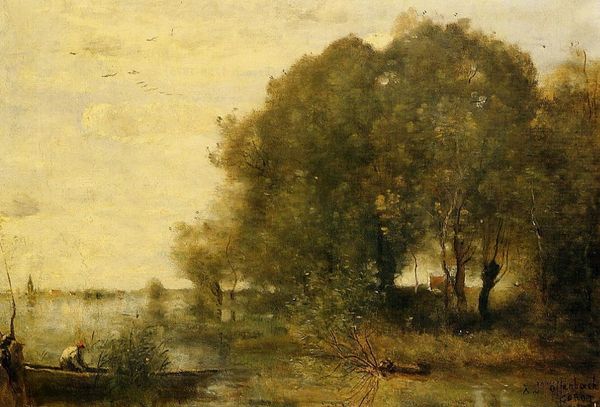
Copyright: Public domain
Curator: A hazy tranquility, almost dreamlike. Editor: We’re looking at "Summer Morning on the Oise" by Charles-François Daubigny, painted in 1869. You can see Daubigny, a master of plein air, really capturing a fleeting moment on the river, it's so still and subtle. Curator: Subtle is the word. It's like a whisper of a morning. Those soft pinks and blues in the sky... it's pure poetry, a very different articulation of poetry if compared to Delacroix's work, a bit less pompous maybe. Editor: Precisely. Notice the horizontal composition. It really emphasizes the breadth and calmness of the Oise. And his use of impasto, particularly in the foreground grasses, adds a tactile quality to the otherwise ethereal scene. Curator: That thick paint is delightful. You can practically feel the dampness of the riverbank. But what always gets me is how he manages to capture the light shimmering on the water. It's not just seen; it's felt. And there, close to the water surface some little touches suggesting floating fauna. He really let loose on it, didn't he? Editor: Absolutely. Daubigny was quite revolutionary in his approach. He painted directly from a boat, which he called his "studio-boat." He wanted to capture the essence of nature firsthand. See those figures on the shore, or those on a boat a bit farther off? Those are genre details that enhance the quotidian, unmonumental tone of the painting. Curator: His dedication paid off. You can almost hear the gentle lapping of the water against the hull, or against the shores, feel that cool air. It’s intimate. Editor: Very true. Daubigny bridged Romanticism and Impressionism, he’s looking at nature but through a very sensitive, personal lens. It’s this that I see when I stand before it. It feels intensely, uniquely seen. Curator: It's the quiet beauty that lingers long after you've moved on. Editor: Indeed, a quiet masterpiece.
Comments
No comments
Be the first to comment and join the conversation on the ultimate creative platform.
